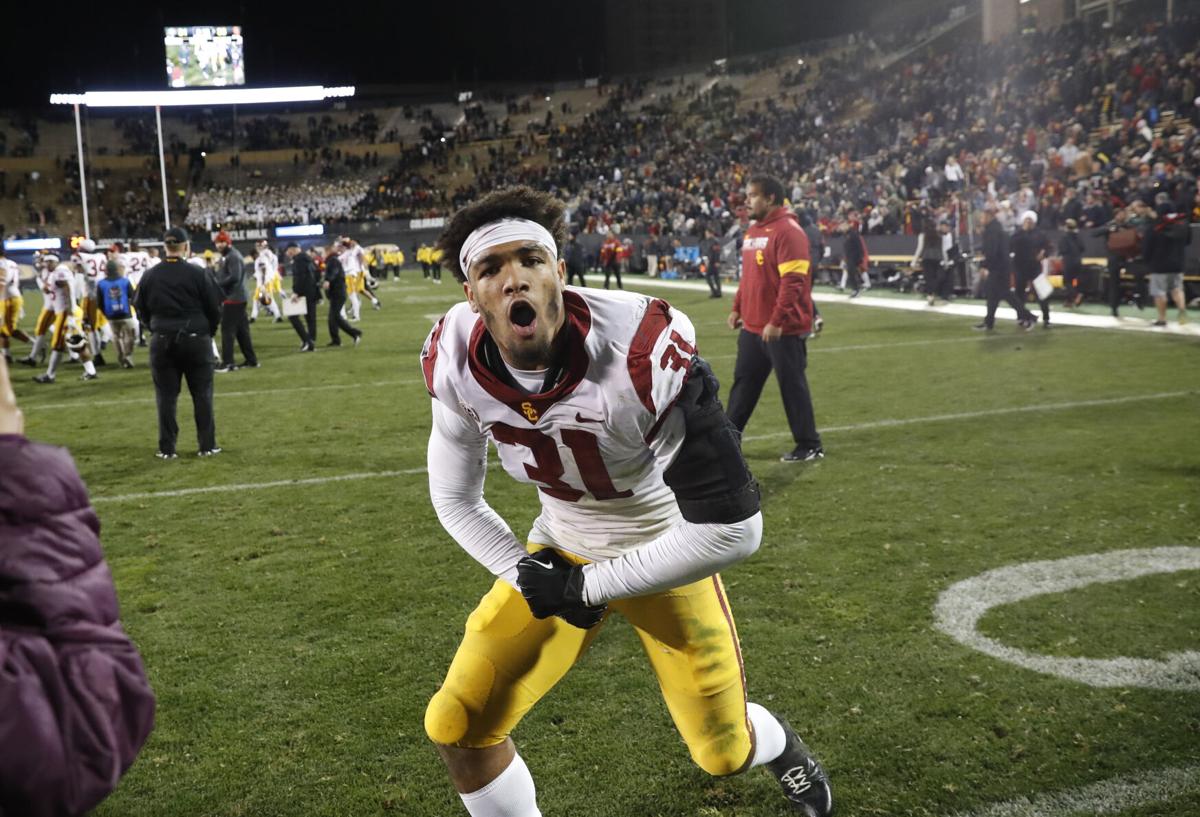College football has become a Beatles song.
You say, “yes,” I say, “no.”
You say, ‘stop’ and I say, “Go, go, go;”
“Oh no.”
This is college football, 2022. “Hello, Goodbye.” It is a cautionary tale of how fleeting recruiting pledges can be.
Every coach who helped recruit new Arizona linebacker Hunter Echols to USC five years ago no longer fights on for old S.C.
Clancy Pendergast is an analyst at UCLA. Kenechi Udeze is on the Tennessee Titans’ staff. Others from Clay Helton’s 2017 staff have scattered and now coach at Fresno State, Purdue, Indiana, Western Kentucky, Montana and Tennessee. Helton is the head coach at Georgia Southern, of all places.
Johnny Nansen, who was Echols’ linebackers coach at USC, is now the defensive coordinator at Arizona. Nansen recently re-recruited Echols from the teeming NCAA transfer portal; Echols will play his sixth season of college football for the Wildcats.
Hello. Goodbye. It’s a new way to fight back against the Trojans’ vast edge in recruiting resources.
After Echols committed to play for USC in August 2016, he had second thoughts and made a recruiting visit to Oklahoma. While visiting the finances-blessed OU football compound in November 2016, Echols spent time with Sooners defensive coordinator Mike Stoops (now at Florida Atlantic) and linebackers coach Tim Kish (now retired and living in Tucson).
Oklahoma’s offensive coordinator that season was Lincoln Riley, now the head coach at USC, the school that Echols left to play for Arizona, formerly the school of Stoops and Kish.
Confusing? That’s college football.
Almost every FBS school now goes through an annual mid-winter evacuation, as players flee to find a better fit. Already this winter the Pac-12 has more than 75 players queued up in the transfer portal.
Over the last few weeks, Arizona has gained transfers from USC, UTEP and Michigan. Last year, it added transfers from Washington State, Central Michigan, Colorado, Vanderbilt, New Mexico State, UNLV, Northwestern, Bowling Green, Southern Utah and Fresno State.
Everyone is vulnerable — even and especially USC, which has gone 22-21 the last four seasons, its worst four-year period since 1957-60.
The transfer portal is one of the modern elements that works against USC. Some say the Pac-12 can never truly be a power hitter in college football until USC returns to dominance. I say fiddlesticks. Only two entities in the Pac-12 hope the Trojans rule the league again — the accountants at Pac-12 headquarters and USC.
To those at the top, it would be just fine if the Pac-12 South became the league’s penny ante division because, with USC at the top, TV dollars and attendant visibility would add up impressively.
But about the last thing Arizona and ASU need is for the Trojans to dominate the Pac-12 South. Pac-12 football isn’t about the greater good; it’s about not going 2-18 against USC, as Arizona has since 2001.
Arizona and Colorado and UCLA would much prefer to see a successful goal line stand than a USC gold line stand.
One thing Echols will not be when he enrolls at Arizona next week is starry-eyed. He was part of what was thought to be the back-to-prominence USC Class of 2017, a group that included 17 four-star recruits ranked No. 6 nationally by Rivals.com.
Do you understand what it is like to have 17 four-star recruits in a single college football class? Arizona sure doesn’t. During Echols’ years at USC, 2017-21, Arizona was able to sign just three four-star recruits: wide receivers Drew Dixon and Boobie Curry and running back Nathan Tilford.
Tilford ultimately transferred to Texas-Permian Basin. Dixon opted out of the 2020 season and did not return to complete his college eligibility. Curry is in the transfer portal.
Echols has witnessed so much instability at USC, and especially in his Class of 2017, that he would probably just shrug at the unsuccessful tale of Arizona’s few four-star prospects.
Given the freedom to change schools without penalty or delay, USC’s Class of ’17 splintered so thoroughly that the Trojans’ bountiful recruiting classes of 2015-18 led to just one division championship. USC has been passed by Utah as the division’s model football program.
Here’s some context: According to Rivals.com, USC had the nation’s No. 1 recruiting class in 2015, No. 3 in 2018 and No. 6 in 2017. The only real payoff has been Helton’s contract buyout of an estimated $10 million.
What went wrong? The Class of 2017 is the best example. Here’s what happened to those 17 four-star signees:
Receiver Joseph Lewis was sentenced to jail for a domestic violence charge.
Defensive back Bubba Boldon was suspended 28 months for an on-campus incident and transferred to Miami.
Quarterback Jack Sears transferred to Boise State.
Linebacker Levi Jones was suspended for violation of team rules and left the program.
Linebacker Juliano Falaniko never started a game; he made two tackles this season.
Receiver Randall Grimes transferred to UNLV after making two receptions at USC.
Echols and tight end Josh Falo couldn’t crack the starting rotation. Five others became pedestrian roster-fillers.
Of USC’s 17 four-star recruits from the Class of ’17, four became all-conference players: Offensive linemen Austin Jackson and Alijah Vera-Tucker, defensive linemen Marlon Tuipulotu and Jay Tufele. But all exited USC early for the NFL draft.
That’s not much of a yield from the nation’s No. 6 recruiting class of 2017. The instability of modern college football has become the best way to fight back against a “have” school like USC.
Fight on? I’d rather the rest of the Pac-12 fight back.
Contact sports columnist Greg Hansen at 520-573-4362 or ghansen@tucson.com. On Twitter: @ghansen711





